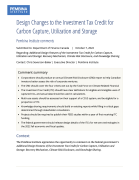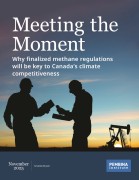This joint statement from a unique partnership of industry and environmental organizations outlines the key elements for an effective Canadian cap-and-trade system for greenhouse gas emissions. The initiative, called the “Canadian NGO-Industry Cap-and-Trade Dialogue,” brought together nine companies and eight environmental groups to discuss the design of a cap-and-trade system for Canada.
Canadian ENGO-Industry Cap-and-Trade Dialogue
Related Research & Analysis

Electricity, Oil & Gas
October 7, 2022
Publication
Design Changes to the Investment Tax Credit for Carbon Capture, Utilization and Storage
Submission to Department of Finance Canada
Programs
Leading the transition to clean energy requires advancing solutions to today’s energy challenges from various angles.
The Pembina Institute has spent four decades working to reduce the environmental impacts of Canada’s energy production and to provide actionable ideas on how to implement clean energy.






